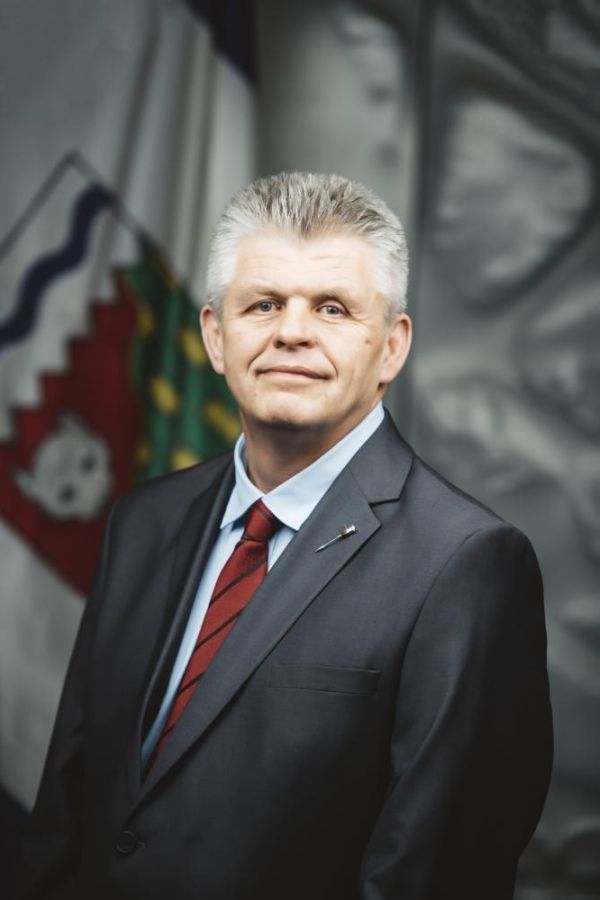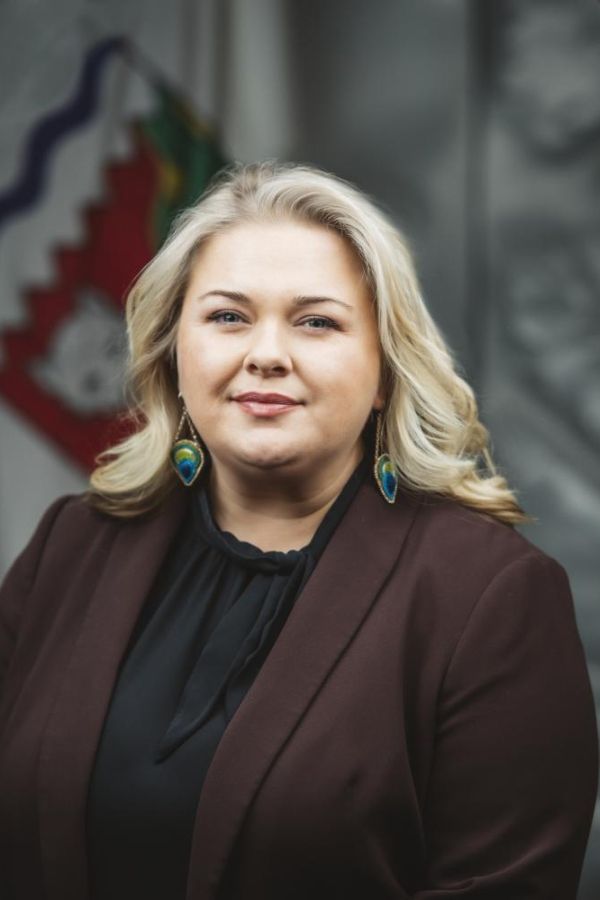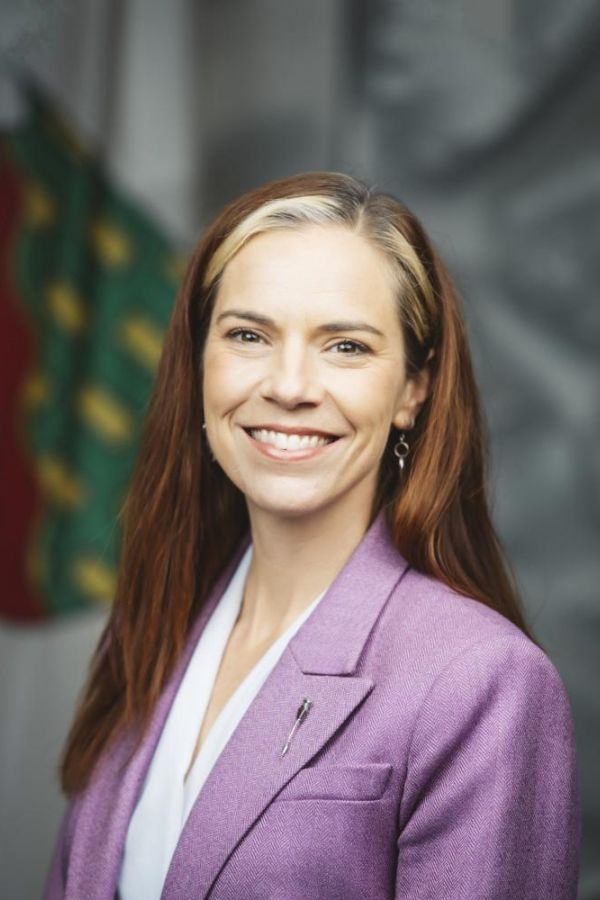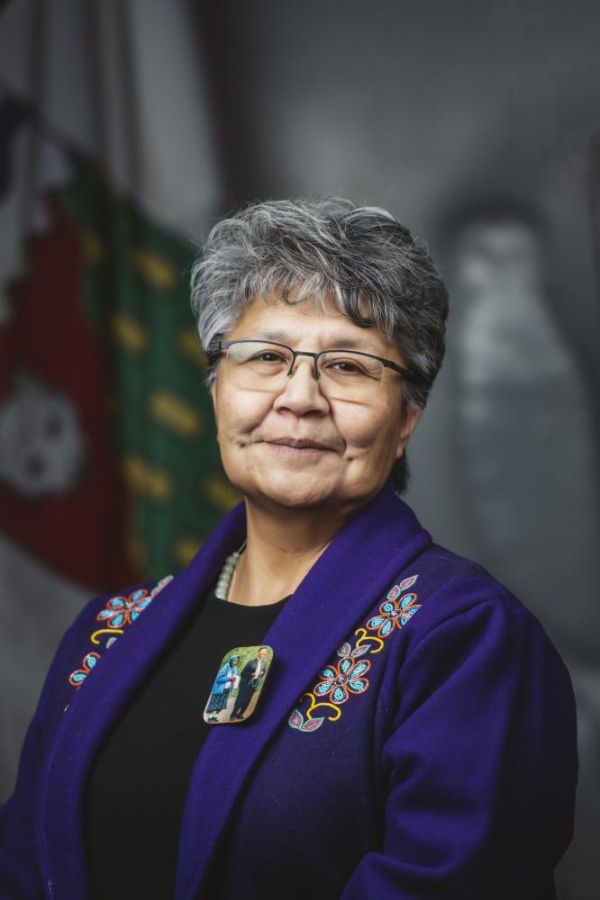
Thank you, Madam Chair. And the Member is correct in remembering that this was a priority, I think, of two years ago. At the time, ECE, ITI, and Department of Finance, collaborated on looking at what type of valuable art existed in the possession of various departments, what options there may be, and who roles the various departments could play to support inventory and ensuring that highvalue art was protected and maintained for the future of the territory. The Department of Finance determined that their systems could encompass tracking those artifacts or those art pieces. And as the Minister said, ECE's role is, through the culture and heritage division, is to provide expertise on art that should be valued and protected and documented. Thank you, Madam Chair.

Thank you. Member for Frame Lake.

Thanks, Madam Chair. So yeah, I also want to recognize the work at the museum to prepare an inventory of their collection. It's available online now. You can actually see the stuff that's not on display and you can read about it. You know, it's searchable. It's a great tool. And I think that's the model we should be using maybe for a public face to the inventory that we need for all of our artwork across the system. Maybe there's some aspects of that that you wouldn't want to make accessible to the public necessarily, but it would be great to have that kind of a system. Is that what's being contemplated? And of course I can ask these of my friend the Minister of Finance when they're before us, Madam Chair, but while I've got these friends here I'd ask them. Thanks.

Okay, thank you. Minister of ECE.

Thank you. That is not what is being contemplated. The museum does have a site, and it's amazing the way that you can view the different pieces of art. But that is not the plan right now for all of the GNWTowned art. At some point in the future that would be great, but it is not something that we are currently working on or envision beginning any time soon. Thank you.

Thank you. Member for Thebacha.

Thank you, Madam Chair. And I read the whole report from the language commissioner, and I was quite concerned about a couple things. One of them is that the language commissioner has said in that report that English and French are priority items within the language thing and the nine Indigenous language are kind of a second priority. That was pretty well the final like, some of the things that was said in that report. And I guess my concern is I'm going to you know, the official languages report that's coming out from government operations, I agree with it. But, you know, I've decided that I'm not going to be voting I'm not going to vote against it, I'm going to abstain, but for the following reasons:
Until the Indigenous languages get the same standard as the French language, you know, I just cannot vote for because revitalization of our languages, the Indigenous languages is extremely important to the Indigenous people of the North. And there's a lot of nonIndigenous students that are also taking some of these courses in revitalization in the South Slave. I want to commend the school boards in the South Slave for all they do to revitalize the Aboriginal languages. But I have to make sure that I also want to make sure that the director of languages and that department also feels the same way and helps the mandate of revitalization of Indigenous languages. And I wonder if that is going to take place in financial assistance the way it should have. And I don't see that in the entire overall budget. You know, we have French schools, and I'd like to see the day when, hopefully in my lifetime, that we have a school of Indigenous language revitalization. And I want to see how the department feels about that, Madam Chair. Thank you.

Thank you. Minister of ECE.

Thank you. I would love to see a school of language revitalization. There are many efforts going on around the territory. I've spoken about things like the mentor apprentice program. The department has put time and resources into developing postsecondary courses related to languages and hopefully those can be implemented at some point in the future. I mean, there's a lot of ground covered in there, but we do support the revitalization of Indigenous languages. There's great efforts going towards ensuring that we are increasing the number of speakers the best we can, and we'll continue those efforts. Thank you.

Thank you. Member for Thebacha.

Mr. Speaker, I do not want to take away from the French or the English languages that we have to know in order to progress to postsecondary. I'm not doing that because those are also a key to our education system. But the main key for the Indigenous people of the North is that the Indigenous languages have to be revitalized and I want to know if we could have you know, to start thinking about making sure that there is going to be a school established in the North, the first of its kind, to revitalize the nine Indigenous languages. And so we make a statement that how important the loss of our languages has been to the students and people of the North. Thank you, Madam Chair.

Thank you. Minister of ECE.

Thank you. So as I stated, we are put resources in to developing language programming that can be offered at a postsecondary level. My hope is that the college, once it gets its feet under it in terms of the transformation, because there was a lot of work happening there, that they can begin looking at implementing some of those courses and that we can have these, you know, accredited postsecondary courses focused on language revitalization. Thank you.

Thank you. Member for Thebacha.

I don't have any other questions.

Are there any further questions under this section? Seeing none, please turn to page 38.
Education, Culture and Employment, culture, heritage and languages, operations expenditure summary, 20232024 Main Estimates, $21,306,000. Does committee agree?
Agreed.

Thank you. Committee, please turn to page 43, early learning and child care, beginning on page 43 with information items on page 44 to 46. Questions? Member for Kam Lake.

Thank you very much, Madam Chair. Madam Chair, I'm wondering if the Minister can let us know, under fees and payments there's a significant increase and I'm just wondering what fees and payments come out of there as far as early learning and child care. Thank you.

Thank you. Minister of ECE.

So I believe those are for the we have rolled out a child care fee reduction subsidy, and we provided child care operators with administrative funds so that they could hire administrative support to help them with some of that reporting. So that would account for those increases. Thank you.

Thank you. Member for Kam Lake.

Thank you very much, Madam Chair. No, that's helpful information. I'm also just looking at the total raise in funds for the early learning and child care program budget. And I'm wondering what portion of this will go to dollars needed for the increase in the wage grid that is expected to come in the next year? Thank you.

Thank you. Minister of ECE.

Thank you. $2.3 million is what we are projecting for this upcoming here, and we do not have a wage grid in place. What we are doing is we're providing wage topups essentially. We are providing it this year and in the upcoming fiscal year, we plan to increase that funding. Thank you.

Thank you. Member for Kam Lake.

Thank you very much, Madam Chair. Madam Chair, I'm wondering if the Minister can speak to roughly what that wage topup will look like from the perspective of ECE. Is that topup going to be roughly or can it even be worked into, you know, an average figure for people who provide early learning and child care across the territory? Thank you.

Thank you, Member. Minister of ECE.

Thank you. So the way that we are distributing that, we look at how many staff are required under the regulations in a child care facility. And based on how many staff are required, which is based on the number of children and the age of the children that that facility cares for, we provide funding for each of those employees that are required. This year the funding is about or it is $12,750 for each of those employees. And next year will be just over $16,000. And I say for each of those employees, but this actually goes to the provider itself. It goes to the operator themselves, and then they distribute those funds to their employees because there could be instances where some employees perhaps have higher credentials; they might have diplomas or degrees and operators want to pay them more and they have that flexibility. So we provide them with a lump sum based on how many employees they're required to have and then they distribute it to their employees accordingly. Thank you.

Member for Kam Lake.

Thank you, Madam Chair. Madam Chair, we're in a bit of an interesting jurisdiction where we are also very reliant not only on notforprofit day cares, but we have a lot of day homes. When my kids went to child care during the day, all three of them went to day home providers, which was wonderful. I still have relationships with those people and adore them. My kids spent more time with those people than they did with me. And so I'm wondering how does it work within the territory as far as these wage topups? Is it provided to both day cares and day home providers, and how does that division happen when they both operate under the same act? Thank you.

Thank you. Minister of ECE.

Thank you. So day homes are forprofit businesses and nonprofit organizations are, you know, by definition nonprofit. And they have higher operating expenses. They generally have to rent or lease a space. They have salaries. So the parent fees that come into the day care centres versus the day homes don't go quite as far. And so day – child care centre employees are not paid don't earn as much as day home operators. So what we want to do is raise the wages of the child care workers so that we're going to attract more people to the sector but also to try to get everyone on par with each other and ensure that there's a level playing field. Thank you. So for that reason, that is why we are only funding the child care centres and not the day homes. Thank you.

Thank you. Member for Kam Lake.

Thank you very much, Madam Chair. So I'm wondering can a day home call themselves a notforprofit and in turn call themselves sorry, and in turn pay themselves a living wage, or where does that division happen? Is the division actually between the number of kids they have or the number of employees? How does ECE make that determination, or is it simply based on where they operate out of? Thank you.

Thank you. Minister of ECE.

Thank you. I don't think that a forprofit business can call themselves a nonprofit and then, you know, access funding as if they were a nonprofit. So that's not legal advice to the Member but that's my very basic understanding of it. Perhaps for some more information on this and how those two types of organizations are differentiated, I'll hand it to the deputy minister. Thank you.

Thank you. Deputy minister MacDonald.

Thank you, Madam Chair. Family day homes are treated in the regulations, Child Daycare Act standard regulations. So it's how they're licensed. They're licensed for three space types. They can have two infants, four spaces for preschools, and two for out of school spaces. So, really, there's a limit to the number of children that they can have in care. And that's really what differentiates them from a centrebased program which has another set of space and supervisory requirements. And, again, because the current Child Daycare Act is really focused on child safety, wellness within the context of those programs.
As the Minister indicated, from a funding perspective we do treat family day homes differently currently than we would with centrebased programs. However, there are a host of different ECE programs that are provided to both types of licensed child care facilities. So one would be the early childhood program. The Member remember that one as the primary vehicle for funding licensed programs over the past number of years. And that is currently an attendancebased program based on actual attendance. So there are other sources of revenue for family day homes other than the program currently being discussed. Thank you, Madam Chair.

Thank you. Member for Kam Lake.

Yeah, thank you, Madam Chair. I wanted to move on to the infrastructure fund. And given that the goal of ECE is to increase spaces by 300 children in the life of the federal agreement, I'm wondering why we're not seeing an increase to this fund given that especially what we're seeing from lessons learned from Quebec was an urge to increase capacity upfront. Thank you.

Thank you. Minister of ECE.

Thank you. We have a limited budget, and you can only cut it so many ways. I would love to see that fund increased. I think going forward that is may have to happen. We are at a point now where we have been receiving proposals for this fund, and those proposals have resulted in grants to the organization and then new spaces being created. We've seen it across the territory. A lot of the organizations who were on that path to, you know, or thinking about developing child care centres have already accessed this funding and so now we're finding that there's not as many organizations out there that have as welldefined plans. Because it's not just an application to build a child care centre. You also need a plan to operate a child care centre. So that is one of the criteria. So we are trying to figure out now how do we best use these funds to support groups that want to build something, and it might not they might not be at the point where they're ready to build; they might need a different type of assistance. Thank you.

Thank you. Member for Kam Lake.

Thank you very much, Madam Chair. My I probably only have time for one last question. So the supporting child inclusion and participation, it says contributions to target the needs of children who are vulnerable, at risk, or who have specific needs. I'm assuming that this is largely used more in kind of an inclusive for kids with disabilities within a daycare or day home setting. I'm also wondering if given that children of teen parents might fall into a vulnerable or at risk category, if this would also be an avenue to access funding for teen parents? Thank you.

Thank you. Minister of ECE.

Thank you. I'll hand it to the deputy minister.

Thank you. Deputy minister MacDonald.

Thank you, Madam Chair. So with the supporting child inclusion and participation program, the Member is correct. For those more familiar with a JK or a K to 12 system context, it is roughly analogist to inclusion where the ultimate purpose of the program and the funding is to support in this case licensed programs to be able to more effectively support children who may have exceptional needs of some kind or another.
In terms of how the program is broken out, there is an opportunity for support for community programs, such as family and tot programs. There is also a stream within it that focuses on additional staff to support child participation. So you could have a licensed program; you may need additional staff for that extra supervision that may be needed as well as program consultation which could be bringing in expert advice, specialized services, those types of needs. So that's really what that program is meant to address. Thank you, Madam Chair.

Thank you. Member for Great Slave.





